
A whole new world of gardening awaits those who use garden bulbs to their full extent, for it is possible to have flower bulbs of one kind or another, in bloom throughout all of the year. This, certainly in the UK.
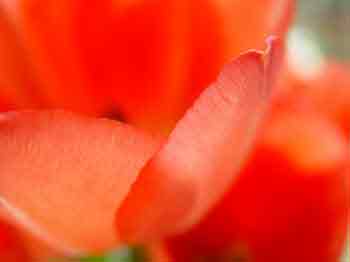
Tulips
To achieve this utopia of twelve months of flowers in your garden, we do have to cheat a little, and use some plants which are not grown from true bulbs, but which are still referred to as bulbs in the gardening world. At the bottom of this page you will see listings of bulbs throughout the 12 month period!
They are also known by their proper classification by those in the know. However, most catalogues and nurseries that specialise in 'bulbs' also stray off the strict botanical path. So shall we!
The main thing is, that you can get year-round colour by growing bulbs in your garden. In this part of the site, we will refer to all plants that are grown from underground modified stems or roots, as bulbs. We will also of course describe them in their true classification of bulbs, tubers, corms and rhizomes. Daffodils - or Narcissus - grow from bulbs; Crocus grow from Corms; Dahlias grow from Tubers; Iris grow from Rhizomes.

A Bulb
A bulb is a specific type of plant part that mainly grows underground, but sends up leaves and flowers for all of us to enjoy at many different times of the year.
For the purpose of this area of the site, we are going to group several types of plants that grow from underground bases, but which are not specifically bulbs. Included in these, will be corms, rhizomes, tubers together with some other ‘fleshy roots.
To whet your appetite for this extension to 'normal gardening' consider this calendar list of bulbs that flower at different time of year - giving you the much sought after, year round colour - Bulbs flowering all year! So for a start, follow your spring show with some Summer Flowering Bulbs. Then Autumn Flowering Bulbs followed by some Winter Flowering Bulbs
Garden Bulbs are or should be one of the easiest ornamental plants to grow. The main problems occur when it is forgotten that bulbs are actually plants and have specific needs - even when dormant.
As they generally oblige us by 'hiding' away when not in flowering growth, bulbs are often neglected insofar as feeding and watering are concerned. The dormant period is particularly important - even though you cannot see the bulbs. Many will require watering whilst dormant - especially the spring flowering bulbs that lie dormant in the summer months. Important changes take place during the bulb's dormancy period, and for long lasting pleasure from your bulbs, it is important to give them the year-round attention that they need.
This series of articles should provide you with the general growing specifics, whilst the general bulb pages will give you the detailed requirements.

Lililum Red Night
Does your garden look ragged and dispirited by June, when spring-flowering bulbs have finished blooming? Extend your bulb season with summer-flowering bulbs! Summer bulbs will provide the scent and colour to revitalize your garden, and mix beautifully with your existing perennials and shrubs.
Ixia ‘Mabel’, for instance, grows 12-20 inches tall and smothers itself in hot-pink blooms in early summer. Ixia ‘Tita’ has masses of soft apricot-pink shading to warm red-pink. Both are equally attractive in containers or borders, or even planted along a garden path between groundcover plants.

Autumn Crocus
This list of autumn flowering bulbs was never intended to be a ‘top Ten’ but after I had collated my list of good autumn flowering bulbs, I see that is the way it has gone! I am sure that I will get an email or so with a few omissions. In keeping with the rest of the section about flowering bulbs, I have included a few tuberous plants.
Spring and summer is the time normally associated with flowering bulbs, but autumn can also be an important time for autumn bulbs. The bulbs (and tubers) mentioned here will all extend the garden colour by a few months. The only problem being, that if you are reading this in the autumn, then you are generally too late to do anything about it for this year.

Winter Aconite
There is quite a wide range of bulbs that flower in the winter months - including a few of the tuberous types and Rhizomes.
Those winter bulbs that do flower in the winter are generally much hardier than is normally realised, also quite reliable in bringing a splash of colour to your winter garden - or container.
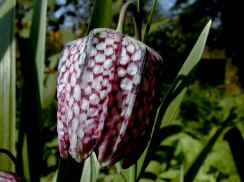
Fritilaria
Prepare everything thoroughly and your expectations can be high for a beautiful display next spring. A good start is half the battle. Follow these golden rules, which are the key to success.
Bulbs are often simply bought and planted without too much though as to what is best for them. Whilst the bulb is a storage house of energy, there is still much to be done to ensure that you have a good crop of flower bulbs, and that you do not deplete that energy store which is so important for long live of your bulbs.
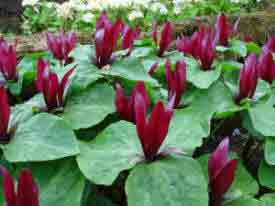
Trillium sessile
There are basically two planting seasons for the popular garden flowering bulbs, being spring and autumn. Some choice species and alpine bulbs might be planted at different times according to type.
Generally, those bulbs that flower in spring – such as crocus, daffodils, fritillaries and hyacinths – are normally planted in the previous autumn – or late summer. The main exception to this being the planting of snowdrops – arguably winter flowering as distinct from spring flowering bulbs.
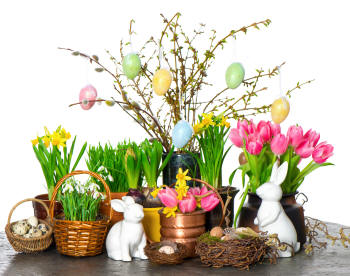
Growing Indoor
Most bulbs can be grown indoors – for a short period of time! Cyclamen are the main exception, in that they can be successfully grown in the house for the whole of their life. Not easy, but possible.
Other bulbs are generally bought into the house for flowering period – often at Christmas – but spend most of their growth cycle out of doors or in a cool garage. Whilst bulbs for Christmas are an obvious target - for presents and holiday feel, bulb can be more easily bought into flower a little later.
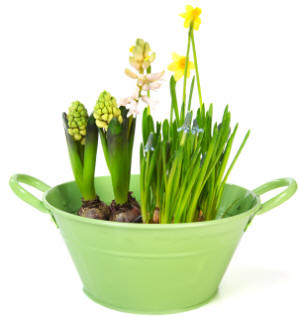
Bulb Fibre Compost
Bulbs which are grown indoors - such as those that are normally forced for winter - and especially Christmas - blooming, are normally grown in a special type of bulb compost known as Bulb Fibre.
You can either purchase this in bags of various sizes, or if you are so inclined, you can easily make your own bulb fibre. You should not use ordinary potting compost for this purpose.
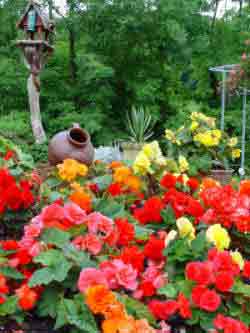
Begonias
Listing of garden bulbs with the letters A through to D inclusive, together with relevant pages of information about the various individual bulbs.
The list includes all of the Tubers, Rhizomes, Corms and other fleshy rooted perennials that act in the same manner as real bulbs. Browse or use the Search if you know the name:
Other information about growing bulbs can be found in the top navigation area.
This section covers bulbs such as the ever popular Agapanthus, Alliums, Anemones, Begonias Cannas, Crocus, Hardy Cyclamen and the versatile Dahlia groups.
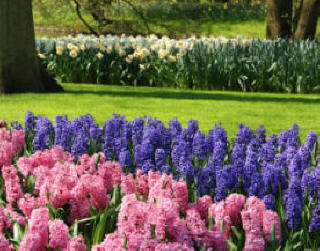
Hyacinth Bulbs
Garden Bulbs, tubers, corms and rhizomes starting with letters E though to Z.
This group of flowering bulbs represents the largest range of varieties, but not necessarily the most popular range! There are the normal favourites such as The Fritillaries, Gladiolus, Hyacinths, Irises and of course the Daffodils (Narcissus) and also a few that should be more widely grown - including Leucojum, Galtonia, and the unusual Trillium group.
Browse or use the Search if you know the name:
All garden plants - and bulbs are no different - have a wide range of common names. The names can often be specific to certain areas of the country, and the way is wide open if you are looking for a very specific type of bulb. You will soon see that a pink daffodil is not just a pink daffodil. there will be many different types of pink daffodils. This is where the botanical names are invaluable if you want to have that something special that you have seen in a garden or park somewhere.
We will try to list all of the common names of bulbs and match them to their proper botanical name to help you get exactly what you are looking for. Our list is not exhaustive - so we look forward to hearing from you with your own regional variations. If you do have a 'missing' name for us, it would be good if you can fully describe the bulb which your name refers to, and we will then try to match it with its proper botanical name. No easy task - but it should be fun and help sort out some of the confusion that exists with plant names!